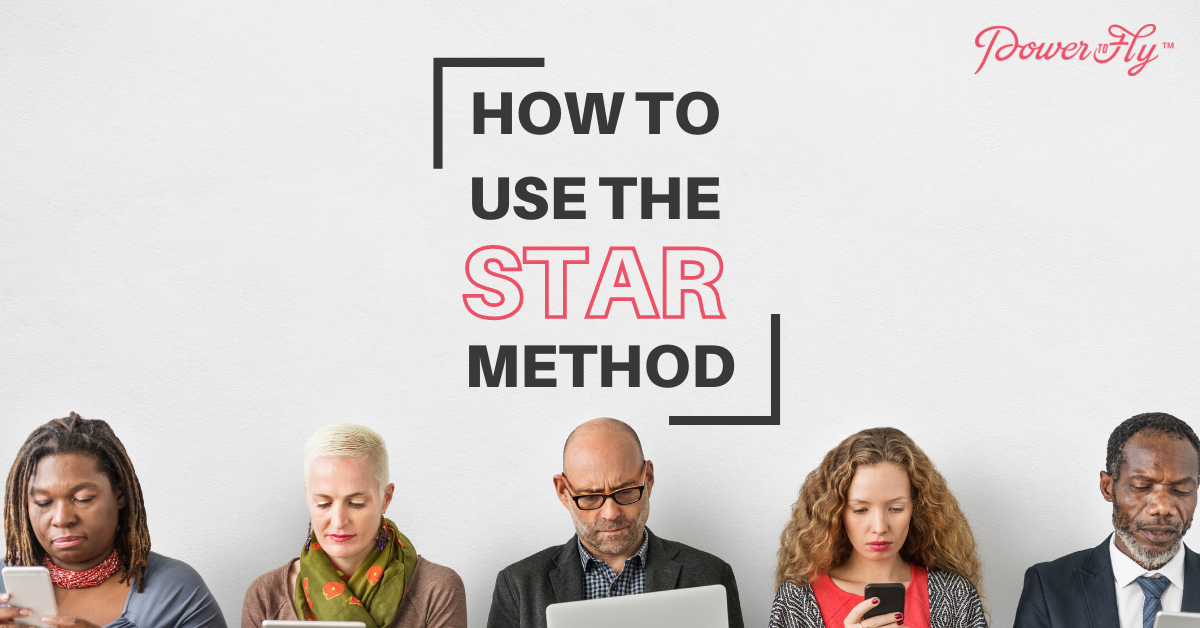No matter how experienced you may be, job interviews can be intimidating.
Whether you’re walking into it brimming with confidence or stifled with anxiety, there’s really no telling how an interview will go.
And oftentimes, a weak response to hard-hitting questions can be a big enough mistake to ruin the entire interview– and your hopes of getting the job.
Don’t worry, we’ve all been there. And as dreaded as some interview questions can be, you can use them to your advantage and showcase why you’re the best candidate for the role. Keep reading to learn more about one of the best techniques that you can use to ace your interview: the STAR method.
What is the STAR Method?
The STAR method is a simple format designed to help you eloquently and meaningfully answer some of the toughest questions in job interviews. This method gives you the opportunity to prove your professional skills through a well-communicated story of your own experience.
These questions, known as behavioral or situational interview questions, are important for employers to ask because they reveal how you will respond to situations and conflicts that arise in the role you’re interviewing for. By breaking down your example experience into four parts, the STAR technique will help you craft a response that is clearly articulated, professional, and meaningful, and showcase your competency in the workplace.
Choosing the Right Story
Before we jump into how to use the method, let’s get clear on the questions that you can use it for. Behavioral questions usually begin with something like:
Tell me about a time when…
Give me an example of…
What do you do when…
Because there are many ways behavioral questions can be asked, there are an infinite number of stories that you could use as examples. This gives you the freedom to cater the situation to your unique experience, but it can also make choosing a story difficult.
Luckily, there are a six categories of situational stories you can always fall back on:
- An example of something unique or interesting that you have done in your life
- An example of you problem solving
- An example of you remedying a mistake you made
- An example of your success as a teamplayer
- An example of you overcoming an obstacle
- An example of your success as a leader
Once you’ve thought of some stories, the STAR method will help you format them into a manageable response.
Using the STAR Method
The STAR method has four parts: Situation, Task, Action, and Result. Each section of this technique contains a portion of your story. By breaking it down into four manageable parts, you will be able to craft an example certain to impress your interviewer.
Let’s break it down!
Situation
The first step is to set the scene.
Like any good narrative, your story needs context. Regardless of how applicable your example may be, failure to explain the setting can leave your interviewer confused. So, remember to be as clear and concise as possible. Who were the people involved? What events were occurring? What challenge or challenges were you facing?
Remember to only share relevant background information and work experience. As confusing as a lack of context can be, it can be equally as messy to bog your answer down with unnecessary detail.
Task
The second step is to explain the task.
This is where you will illustrate your role or responsibility in the story. What was your goal or task? Who assigned you this responsibility? What was the desired outcome?
This is your chance to explain your response to the situation so that your interviewer can understand what your goal was and why. Much like the Situation portion, this part of your answer should be brief. Only include enough information to make your point clear.
Action
The third step is to reveal the action you took to accomplish the task.
Your interviewer is aware of the situation and what your goal was to resolve it, now it’s time to explain how you went about getting the desired outcome. What steps did you take to achieve success?
This is the most crucial out of all the STAR method steps. Your actions will show the employer whether or not you are suitable for the role you are interviewing for. They will be looking for you to “display a high level of assertiveness, confidence, and good decision-making skills,” so it’s important to avoid a vague or lazy response. It’s important to remember that your interviewer is looking for specific characteristics, so they are less interested in your goal and more in how you approached it.
Result
The final step is to explain the outcome of your actions.
You’ve talked about the situation, your task, and what steps you took to accomplish it, now you need to reveal the final results. Was the situation resolved? Did you reach your goal? Did the final outcome meet your expectations? If not, how did it differ?
This is your time to truly make yourself stand out. Whether it was a lesson you learned, a catastrophe avoided, or a positive impact on the company, your story’s conclusion should be upbeat, meaningful, and a display of your skills. Be specific in your achievements– you’re aiming to impress!
Remember, behavioral questions, however tough, are a way for you to prove your skills and experience to the employer. Use the STAR method to show that you have what it takes to be successful in the position– and ace your job interview while you’re at it!
Ready to put the STAR method to practice? Check out our job board and start applying today!



